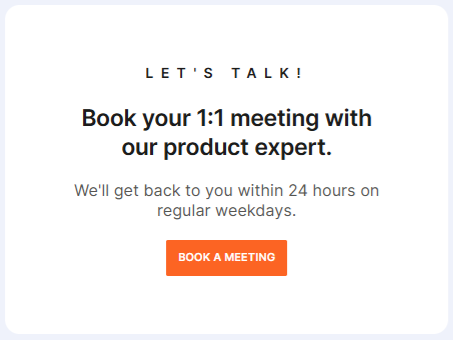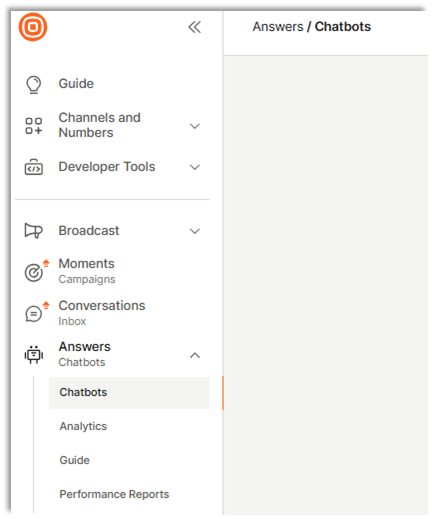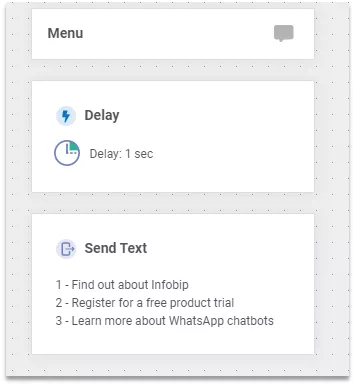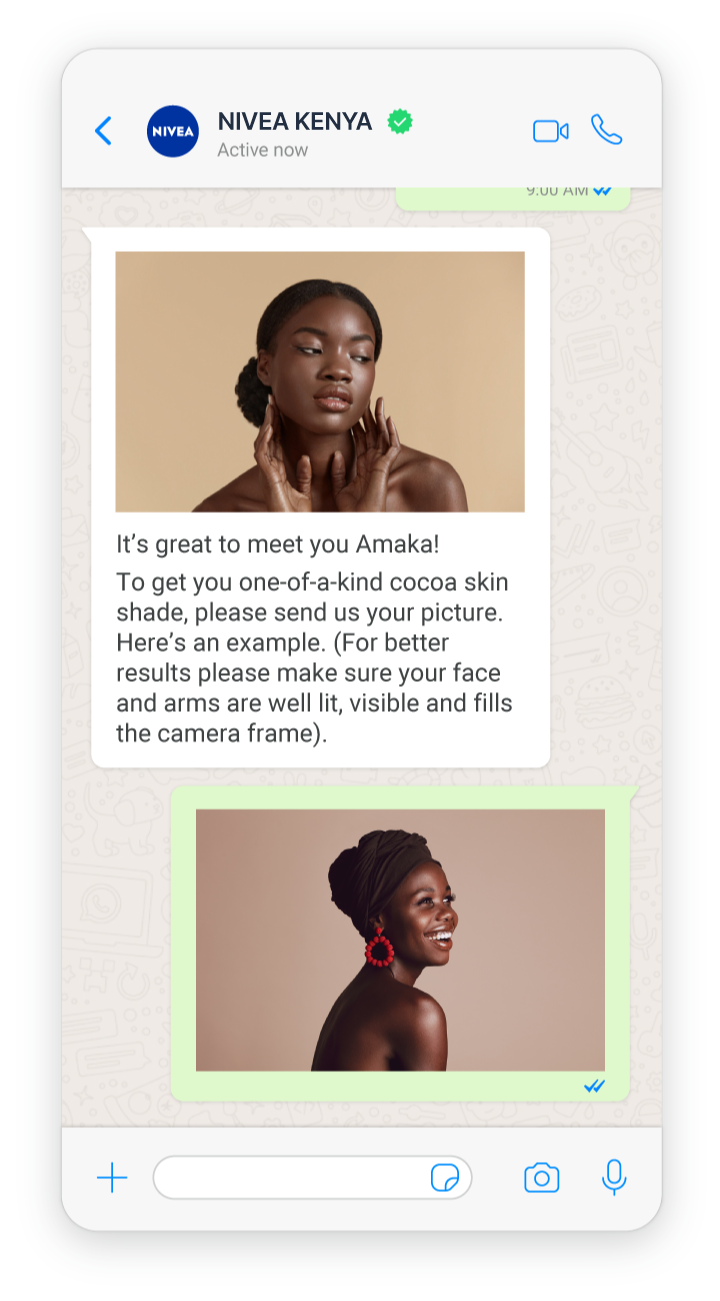How to design and build a WhatsApp chatbot in 2026 – with examples
Thinking about incorporating a WhatsApp chatbot into your communication strategy in 2026? Here’s everything you need to know to plan, design, and build a chatbot that helps you connect with your customers – all using a no-code interface.

So, you think building a chatbot for WhatsApp would benefit your business but don’t really know where to start?
You may assume that these chatbots are complicated and very expensive to create. Think again – with today’s technology even someone without a technical bone in their body can create one in just a few minutes, using a tool that guides you through the process.
In this guide we cover everything that you need to know to plan, design, and build a WhatsApp chatbot without writing a line of code.
If you want to jump straight to the step-by-step instructions, then click here.
Which WhatsApp chatbot is best for my use case?
We already agreed that we aren’t developers, right? If you are then you should explore our WhatsApp Business Platform.
You will need a tool like our chatbot building platform Answers that will do all the heavy lifting and create the chatbot code based on rules that you define in an intuitive, human way. It will also make it easy to test and deploy your chatbot.
The first step is to ask yourself what you want the chatbot to help you achieve – i.e. what business problem do you need help with?
- Reduce contact center costs: Create a chatbot that can answer simple questions from customers like “What is my account balance?” or “What are your opening hours?” that don’t require a human agent.
- Improve lead generation and increase sales: When a potential customer is on your website and wants to make an enquiry prior to buying, a chatbot can give them the information they require there and then to stop them drifting off to a competitor’s site. You can show videos, send brochures, and even conclude the entire sales transaction within WhatsApp with no human help. If a human’s input is required, then the chatbot can even schedule an appointment with a salesperson.
- Take the pain out of form filling: No-one likes filling out forms. It is tedious at the best of times. A conversational chatbot can help by capturing key information required for anything from a loan application to a phone contract renewal just from a photo of a passport or other ID. Few things annoy customers more than having to enter their details time and time again when the business already knows them!
- Ramp up Engagement: There are so many possibilities to delight and intrigue your customers. Brands running daily quizzes and simple games over chat have had great results. The Wordle phenomenon has shown us that something so simple can turn into an internet craze.
Types of WhatsApp chatbot
Once you have the business goal in mind, you can start thinking about the type of chatbot that would be best suited to help. Chatbots are all about improving the customer experience by offering immediate service, 24/7. This will in turn help to offload repetitive work from your contact center, who can concentrate on queries that require a human.
Remember that you can get a lot of value from a simple chatbot that is designed for a specific purpose. It is a good idea to start with a simple use case and then extend to more advanced functionality once you have mastered the basics.
Here are four types of chatbot that you might want to consider:
1. Rule-based chatbots
These are the simplest type of WhatsApp chatbots that can literally be created in minutes. They offer a list of options for the person to choose, using interactive buttons in the UI or by replying with option ‘A’ etc.
Simplicity does not mean they aren’t incredibly useful – consider the following example:

A quick and easy interaction, but very powerful considering that you just saved your customer several minutes on hold and freed up an agent to answer a more complex query.
2. Intent-based chatbots
These are more advanced bots that use natural language processing (NLP) to work out what the person is trying to achieve – i.e. what their intent is.
For example, the following phrases would all be recognized and provided with the same answer:
“account balance”
“what is my account total?”
“how much is in my current account?”
These bots aim to replicate the normal conversational experience that you would have with another human – think of them as WhatsApp equivalents of Alexa or Siri, which are trained to understand human language with all its variances and nuances. The more data they have access to, the more useful they will be.
Training your bot will take time and resources, but this can be offset by crowdsourcing intents from your chatbot supplier or making their creation a group effort for your company. The more people writing intents for your chatbot, the more it will be able to identify and accurately respond to different users’ questions.
In the end you will end up with something exceptional that can provide unique and memorable experiences for your customers.
3. Secured chatbots
This is more a bot feature than a type on its own. As we know, WhatsApp is already highly secure with all messages and media encrypted. However, when dealing with sensitive information you can add an additional layer of security that requires users to authenticate themselves, just like they would if they were logging into an account online or calling an agent and providing their security credentials.
You can even incorporate biometric authentication like face scan technology that makes the security check process as quick and simple as taking a selfie.
4. Trusted personal assistants
With the development of secure chatbots there has been a shift in the types of use cases that organizations are able to fulfill. A key growth area is the introduction of WhatsApp chatbots that help people in their private lives. This could be for medical purposes, financial planning, or addiction recovery. The key is that people now have a high level of trust in these chatbots and are willing to share personal information in return for the support and advice that the chatbot can offer.
An excellent example of this is the WhatsApp chatbot that has been created by the Megi Health Platform, an Infobip partner who provide their patients with comprehensive cardiovascular care. Recognizing that a lot of their chronic outpatients needed additional support, the clinic built a chatbot using Infobip’s self-service platform.
Called Megi, the chatbot’s key advantage is that it can facilitate the two-way exchange of valuable data and information. Patients can provide details of symptoms and submit measurements of their blood pressure and Megi can then provide relevant support and information. Where the submitted readings indicate that intervention is required, the chatbot can connect patients directly with a medical professional.
Patients have consistently commented that dealing with Megi is like speaking to a real person and mention the sense of comfort they get knowing that the service is always available. Nothing can replace the care provided by humans, but with budgets being squeezed, there is a huge opportunity for organizations to use chatbots to supplement the work of trained professionals.
Check out the full story by clicking the link below.
How to build a WhatsApp chatbot in 6 steps
Let us demonstrate how easy it is to build a chatbot to interact with customers in an engaging and conversational way using our chatbot building tool Answers.
By signing up for a free Infobip account you can request a demo by clicking the following option:

You can then request access to our chatbot building platform where you can follow these simple steps to create a working WhatsApp bot in under half an hour.
Step 1 – Getting started

To get started building your first WhatsApp chatbot, log into your account and select the Answers icon from the panel on the left.
Click Create Chatbot and then Start from Scratch.
Give your chatbot a name and select WhatsApp from the dropdown menu (depending on your region, you may need to ask your Infobip account representative to add WhatsApp to your account).
The chatbot builder has a number of elements that can be used by simply dragging and dropping them onto the workspace to build up the chat structure and flow.
These are divided into three sections, based on the function they perform:
- Chatbot sends
- Chatbot receives
- Chatbot actions
In this example we will use some of the commonly used elements, but they all work in the same way.
- Drag element onto the workspace
- Configure it in the side panel
- Link it into the chat flow
Step 2 – Create a welcome message (with fallback options)
Start with an engaging message to greet people that initiate a conversation with your chatbot.
Add a Send Text element by dragging and dropping it onto the workspace and configure it with a welcome message and a question to start building a profile of the person.

Next, add a User Input dialogue to capture their response.
You can capture and save any information that the person provides in the chat, for example name, account number or maybe a product name.
This allows you to use the info later in the chat, and means the person doesn’t have to repeat themselves.
You can add a Repeat or Fallback option at any point in the flow to cater for scenarios where the person does not respond, or responds with text or numbers that the chatbot cannot interpret, like an abbreviation or a slang term that you haven’t allowed for.

Step 3 – Create a menu of options
Once your introduction is done, you can move onto building up a menu so that that the person can select the option they are interested in.
Start by adding a Send Text dialogue that invites the person to select from a list of menu options.

To link the introductory text with the menu we add a Go To Dialog element.
We then use the Text element to provide some context for the menu and a set of options for them to choose using numbers, letters or words.
Remember that at any point you can add a Delay option from the Bot Actions menu, which provides a buffer period to give the person an opportunity to read and digest the last message.

Add a User Input element from the Bot Receives menu to capture their response and the Synonyms option to cater for the various forms of response that you might receive back.

Step 4 – Link menu options to actions
The next step is to provide an Action in response to each each of the options that a person might choose.
Do this by adding a Go To Dialog for each of the response options.
Remember that you can make the interaction even more engaging by adding media like images and videos.
- If a person asks for information about your company, you can send them a video.
- If your customer asks for an address, you can send them the actual location using the Location attribute.
Simply drag the element onto the workspace and upload or link the required media.
Step 5 – Create a seamless exit path
It is a good idea to provide a smooth exit for the person once the chatbot has answered their query.
Something as simple as Can I help you with anything else? With a suitable response for each option.

When the interaction is complete – add a Close session attribute which will reset the chatbot and purge any saved data (if required for compliance purposes).
Step 6 – Test your chatbot
The last step before you go live is to test your chatbot using the Simulation option. This shows exactly how the chatbot will perform when users interact with it and will help to iron out any wrinkles before you go live.
It is a good idea to get a couple of other people to try out your bot, as they may identify issues that you hadn’t thought of.

When you are ready to go, just click Activate and your chatbot will be live!
This is just a simple example of a rule-based chatbot. Using the same approach there is no limit to the complexity and sophistication of the chatbots that you can create. Check out this video to give you an idea of just what is possible.
Can I use my WhatsApp chatbot with other chat apps?
Most organizations start with a chatbot for WhatsApp as that is where they can get the most benefit immediately. In some territories other messaging apps are also popular, so you might want to replicate your bot for Viber, Facebook Messenger, or Telegram. Unfortunately, as each of these apps have a unique underlying architecture, it is not possible to simply plug your WhatsApp chatbot into their service.
However, by partnering with a cloud communications platform that has a chatbot building platform which covers multiple messaging apps from the same source code and business rules, this process is made a lot simpler.
Our chatbot building platform Answers supports the following:
- WhatsApp + Voice
- Viber
- Line
- Messenger
- RCS
- SMS
- Telegram
- Live chat
Boosting engagement with WhatsApp – 4 useful hacks
When you build a WhatsApp chatbot the good news is that you don’t have to wait around for people to contact you – there are a couple of really effective options for proactively engaging with prospective customers, which are actively encouraged by Meta.
1. Ads that click to WhatsApp
Ads that click to WhatsApp are a brilliant shortcut to start conversations with your customers – either via a chatbot or with contact center staff.
These ads are the same as the regular Facebook and Instagram ads, but with a Send Message button that people can click to send WhatsApp messages.
You can simply connect your existing Facebook posts and ads to your WhatsApp channel.
Meta is actively incentivizing this approach with 1,000 free messages per month for conversations that start in this way.
2. QR codes that launch WhatsApp
Reach your customers when they are out and about and in the mood to shop. Display QR codes on products, in store, or on outdoor media which, when scanned, initiate a WhatsApp chat.
Some of our Telecoms customers use this approach to help customers register their new SIM cards, with great results. They simply scan the QR code on the card’s packaging, which connects them with a chatbot that completes the process with them in minutes. No delay, and no need to visit a physical store means an improved customer experience.
3. Create custom in-app journeys with WhatsApp Flows
WhatsApp Flows is a unique feature of the WhatsApp Business Platforms that enable brands to create personalized in-app customer journeys. For example, you can tailor interactions for specific user segments, provide a personalized onboarding service, provide product recommendations, or answer support queries.
Components such as text fields, radio buttons, checkboxes, and drop-down menus, can all be combined to create a series of interactive screen flows that lead customers through their journey. With WhatsApp Flows you can replicate all your existing lead generation website forms, product catalogs, interactive FAQs, and appointment booking services within a single app.
Read our detailed blog WhatsApp Flows explained to find out more.
3. Integrate with voice calling (coming soon)
WhatsApp Business Calling API is a new feature of the WhatsApp Business Platform that is currently in limited beta phase. It enables businesses to add Voice-over-IP (VoIP) calling to B2C interactions on WhatsApp with entry points including WhatsApp chatbots.
This means that customers and prospects that are interacting with a chatbot will be able to call the business when they need extra support, and with permission, the business can call customers directly too (read the full blog for the specific opt-in rules later).
When it becomes generally available, brands will be able to add the new voice channel into their existing communication strategy and add it to any existing chatbots that they have built.
Real WhatsApp chatbot examples
Hopefully you now have a clear idea of what a chatbot can do for your business and how to go about creating one.
As an official Meta partner, we have a wealth of experience helping customers achieve success. If you would like to see the real-world benefits that a WhatsApp chatbot can bring to your business, have a look at these examples that have been created with our chatbot building platform:
Nivea
Nivea launched a highly creative and successful campaign that used a WhatsApp chatbot to connect with consumers in their target market with a positive message celebrating diversity. The campaign was so successful that it achieved 207% of its reach target and is being used as a global case study for the brand.
- As part of the Cocoa Shades campaign a WhatsApp chatbot was built that would encourage people to submit a photo of themselves to the chatbot to receive a stylized version of the image with their own personal skin tone.
- To expose the Chatbot to as many people as possible, NIVEA promoted the number on social media, through influencers, and via QR codes on posters instore.
- As part of the conversation, the chatbot would request consent for NIVEA to use the images on its own media platforms, but a high proportion of respondents also shared the images on their own social channels, exponentially extending the reach of the campaign.


LAQO Insurance
LAQO Insurance built a WhatsApp chatbot with generative AI capability using Azure’s OpenAI service. The digital assistant was designed to supplement the company’s customer service operation and was flexible enough to handle all sorts of common queries in a conversational way.
- The chatbot was designed to only cover insurance claims and general information about LAQO to avoid providing misleading or off-brand information.
- The chatbot can hand over to human agents for queries that it has not been trained to handle.
- The chatbot now handles 30% of LAQO’s customer queries.


Unilever
Unilever experienced 14x higher sales after running a conversational campaign for its new product line via a WhatsApp chatbot.
- This chatbot was all about product awareness and the aim was to be disruptive and impactful to generate interest.
- The team put up 1,000 posters around Sao Paulo that displayed intriguing teaser messages, followed by a WhatsApp number.
- Once interested consumers contacted the number, a chatbot called MadameBot would give advice on product care, and introduce the new products using rich media, such as audio and memes.
- Customers who progressed through the interaction were rewarded with discounts off the new products and free shipping.
Nissan Saudi Arabia
Nissan Saudi Arabia saw a 138% increase in leads generated through a chatbot after introducing a verified WhatsApp channel.
- This chatbot was aimed at providing 24/7 customer care and nurturing leads when the dealerships were closed.
- The rule-based chatbot could provide all sorts of information by guiding customers through a set of menu options.
Flamingo
Flamingo grew its conversion rate by 11% and NPS score by 21% after implementing a self-service chatbot on WhatsApp.
- This chatbot was designed to augment Flamingo’s customer service operation and take the strain off contact center agents who experienced a spike in calls during the pandemic.
- Concentrating on financial service customers, it was key that the agents always had the full history of each customer’s interactions, and this was supported by the chatbot – with ongoing conversations and all chat history accessible in an instant.
- The chatbot is multi-functional – in addition to servicing day to day requests like account balance checks and tax certificate generation, it can also facilitate purchases directly through chat using payment links or links to Flamingo’s eCommerce site.
Cardeko
Cardeko increased customer engagement for its car purchasing campaign with 15,000 conversations per day over WhatsApp.
- As a research portal for car buyers it was crucial that the chatbot could provide the latest information on prices, discounts, options and dealers who stocked the cars that buyers were interested in. This was facilitated by API integrations with the systems that held this data.
- It was also key that all conversation history was available so that sales staff could pick up where the chatbot left off with prospects and customers. This eliminated the need for repeat conversations and removed friction from the sales process.
- With a car purchase often being a sensory experience for many buyers it was important that dealers could share rich content such as videos, images, links, and documents via WhatsApp – helping customers make decisions without actually laying hands on the cars.
Meet our own WhatsApp chatbot
At Infobip we love to put our own products to work in creative and innovative ways, and this definitely applies to our chatbot builder.
We have built lots of useful WhatsApp chatbots that get used every day by our 3,500+ employees and visitors to our offices. From advising employees on health and wellbeing at work to recommending the best local restaurants for a working lunch, chatbots are available to help our staff 24/7.
For our customers and partners, we have an intelligent conversational chatbot that you can interact with on our website or via WhatsApp to find out about our products and services, or to find help for specific queries.
Why don’t you try it for yourself? Just scan the QR code below to start a WhatsApp conversation with the chatbot. If you like what you see, why don’t you talk to us about creating your own WhatsApp chatbot. Just get in touch to start getting conversational.

FAQ
You can initiate contact with users who have subscribed to your chatbot. Meta does not allow unsolicited messages to non-subscribers.
WhatsApp payments are currently supported in India and Brazil for P2P and business payments.
In Mexico and Indonesia payments are available to registered businesses only.
For other regions, in-chat payments cab be supported via integrations with payment systems like Google Pay, Apple Pay, and other local alternatives.
WhatsApp chatbots support all the rich media options that WhatsApp users will be familiar with. These include:
- Emojis, video, images, files, location data, stickers, URLs, keyboard, carousel
You can configure delivery tracking for every WhatsApp message. Delivery reports confirm that your message reached the recipient’s device.
Seen reports confirm that the recipient viewed the message.
Refer to our docs to see all reporting options available
To start the process for WhatsApp chatbot registration, contact your dedicated Infobip Account Manager or use the Infobip contact form to contact our Sales team.









